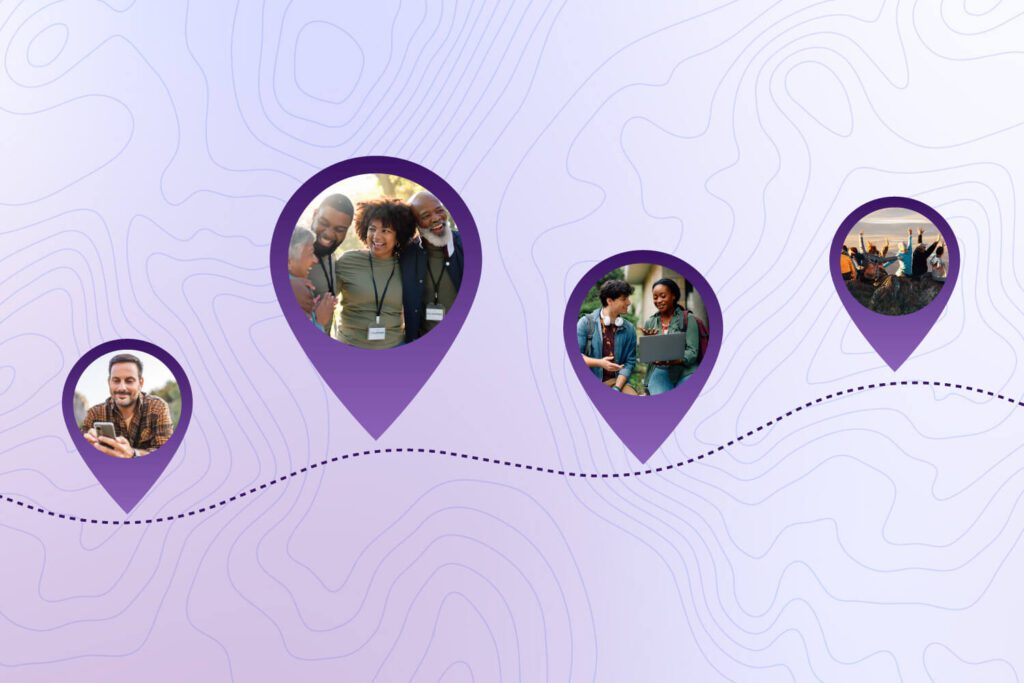Since the pandemic, fundraising best practices have rapidly evolved year by year. As the fundraising landscape continues to change, some trends are likely to fade in importance, but many have the potential to stick around far into the future. Determining which trends are here to stay is vital for nonprofit organizations to effectively fundraise, train their staff, and grow throughout the year.
To help your nonprofit look to the future and a year of successful fundraising, this article will explore four fundraising trends with lasting power:
- Hybrid events
- Software development
- Focus on moderate donors
1. Hybrid events
Hybrid events combine the best aspects of virtual and in-person events, having the potential to please all of your supporters. Here are just a few reasons why your nonprofit should add a few hybrid gatherings to your event calendar:- Accommodate all audiences. Virtual events allow everyone to attend, regardless of physical location. This is true for both your donors and your volunteers, eliminating geographical barriers and expanding your overall supporter base. Hybrid events allow you to cater to remote supporters while still appealing to local donors and volunteers.
- Give supporters more engagement options. Hybrid events give supporters the option to attend in-person for some events and remotely for others. This can be especially helpful for supporters with busy schedules who cannot physically attend each event.
- Lower event costs. Hybrid events allow your nonprofit to host popular events like galas or 5Ks that benefit from an in-person component. Because a portion of attendees will be online, you can lower your overall spending for these events by renting smaller venues and purchasing catering in smaller amounts.
2. Software development
Because technology is rapidly advancing, your nonprofit can stand to benefit from assessing your current tech stack and taking advantage of the numerous nonprofit software solutions available. While each nonprofit’s technical needs will vary, a few software solutions to consider adding to your nonprofit’s tech stack are:- Text-to-give. Intuitive text-to-give tools allow your supporters to make donations quickly, making this one of the most convenient ways to give. Text-to-give also pairs well with both in-person and online events. Display your text-to-give number prominently during your hybrid event’s live stream or announce text-to-give information at a live event to encourage everyone to pull out their phones and give.
- Wealth analytics platforms. Wealth analytics help your nonprofit make more informed decisions about appealing to individual supporters, which can lead to new relationships with major donor candidates.
- Matching gift tools. When a donor makes a gift to your organization, their employers may offer to match their donation, usually at a dollar-for-dollar rate. The right software can help pinpoint these opportunities. This matching gift guide is a helpful starting point for nonprofits new to matching gifts, explaining how to get started and promote this often underutilized donation method that can effectively double your nonprofit’s donation revenue.
3. Focus on moderate donors
While it’s well known that a small number of major donors often make up the bulk of a nonprofit’s annual revenue, many nonprofits find success by taking a closer look at their mid-level donors. Donors who give regularly in reasonable amounts are invested in your nonprofit, and forging connections with this group of supporters can help your nonprofit secure and grow a reliable source of funding. Mid-level donors have the potential to give in substantial quantities over the course of their involvement with your nonprofit. With the right encouragement, these donors can end up contributing even more to your nonprofit through:- Monthly donations. Mid-level donors can grow their recurring gifts in small amounts that fit within their capacity to give and add up to be meaningful at the year’s end. For example, a moderate donor who gives $100 annually can easily become a recurring monthly donor who gives $10 per month, earning your nonprofit an extra $20 while adding convenience for your donor.
- Planned gifts. Most mid-level donors can’t give in large quantities during their lives, but planned gifts provide an opportunity to make a substantial one-time gift. Some nonprofits may feel uncomfortable discussing planned gifts with donors, but research shows 1 in 3 Americans are open to making a planned gift.
- Long-term investment. Major donors are small in number, meaning that your long-term mid-level donors will make up the bulk of supporters who come to events, engage with your posts on social media, and volunteer to help fulfill your purpose and run fundraisers. After each fundraiser, make sure to thank your mid-level donors for their continued support over the years.
Ready to Get Started?




